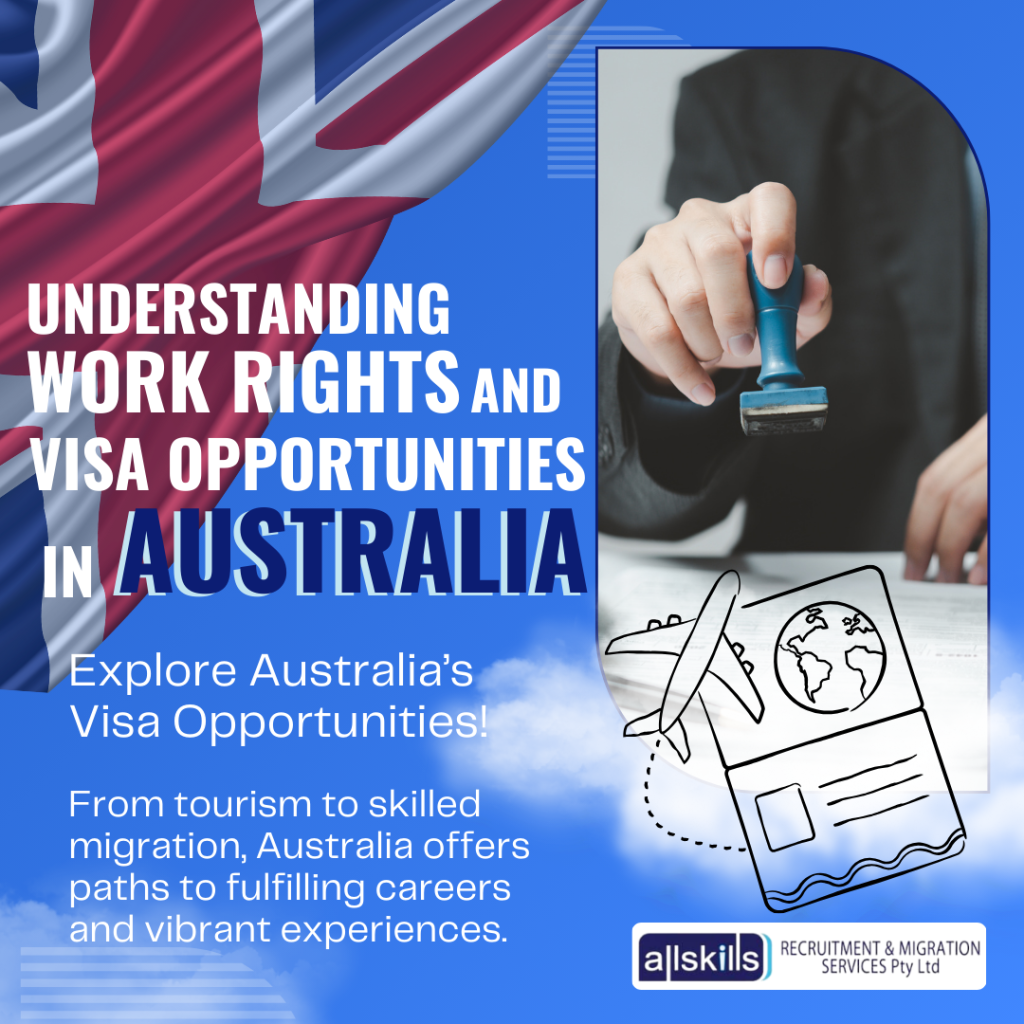To my fellow kababayan, Australia offers a wealth of visa opportunities that open doors to fulfilling careers, valuable professional experiences, and meaningful contributions to its dynamic economy. Whether you’re considering a brief visit, temporary work, or a long-term future through skilled migration, understanding the visa options available is essential for making informed and confident choices. This guide provides a professional and optimistic overview of the work rights and visa pathways that can help you thrive in Australia.
Visitor Visas (Subclass 600, ETA): Perfect for tourism or networking, but work isn’t allowed. Valid for up to 12 months.
and Working Holiday (Subclass 417) & Work Holiday (Subclass 462): For ages 18-30 (or 35 for some), these allow 12 months of work and travel, with 6-month employer limits.
Skilled Independent Visa (Subclass 189): Permanent residency via a points system for in-demand skills like nursing or IT—no employer sponsorship needed.
Skills in Demand (SID) Visa: Employer-sponsored, with streams up to 4 years, targeting healthcare, trades, and tech. A path to permanency exists.
Employer Nomination Scheme (Subclass 186): Direct permanent residency for skilled workers with a job offer.
Skilled Employer Sponsored Regional (Subclass 494): A 5-year regional visa leading to permanency via Subclass 191.
Training Visa (Subclass 407): Up to 2 years of workplace training for skill-building.
Student Visa (Subclass 500): Work up to 48 hours per fortnight during studies, full-time during breaks.
Graduate Temporary Visa (Subclass 485): Post-study work for 2-4 years, ideal for graduates in engineering or accounting.
Global Talent Visa (Subclass 858): Permanent residency for exceptional talent in fields like space tech.
Why These Visas Matter
Australia’s visa ecosystem caters to diverse needs—whether you’re a student building skills, an entrepreneur launching a venture, or a skilled worker chasing permanency. Many, like the Subclass 485 or 407, act as bridges to long-term options (e.g., Subclass 189 or 186), while others, like the Subclass 858, offer immediate stability. From urban hubs to regional outposts, these visas unlock a world of career possibilities Down Under. Choosing the right visa ensures you stay compliant with immigration rules while maximizing your ability to work legally and build a rewarding life in Australia.
Navigating the Expression of Interest (EOI) Process
The EOI is a key step for skilled professionals seeking migration visas, assessing factors like age, education, experience, and English skills to assign eligibility points. Success requires precise, well-documented claims, with a thorough review of qualifications and history to avoid delays. Consulting migration experts or using Australian government resources can boost your chances of an invitation to apply.
Visa Pathways Due Diligence
Australia’s immigration system offers flexibility to pursue multiple visa options tailored to your goals. To optimize the process: research visas matching your skills, consult registered agents for guidance, and stay updated via the Department of Home Affairs website for current policies and requirements. A strategic approach enhances efficiency and reduces costs.
Take Action
Taking the right steps and familiarising yourself with visa conditions, submitting accurate applications, and strategically exploring your options, you can confidently navigate Australia’s immigration system. Whether your goal is a brief visit, a working holiday, or a sustained career through skilled migration, Australia offers diverse opportunities to support your ambitions. Taking proactive steps today can pave the way for a rewarding experience in this dynamic country.
Felix Carao has been a practicing Registered Migration Agent (MARN 1069354) for 14 years, a Qualified Education Counselor (QEAC G028), and an Accredited Recruitment Professional (MRCSA-51889). For enquiries, you may call 0499 599 569 or email him at felix@allskills.com.au or visit www.allskills.com


